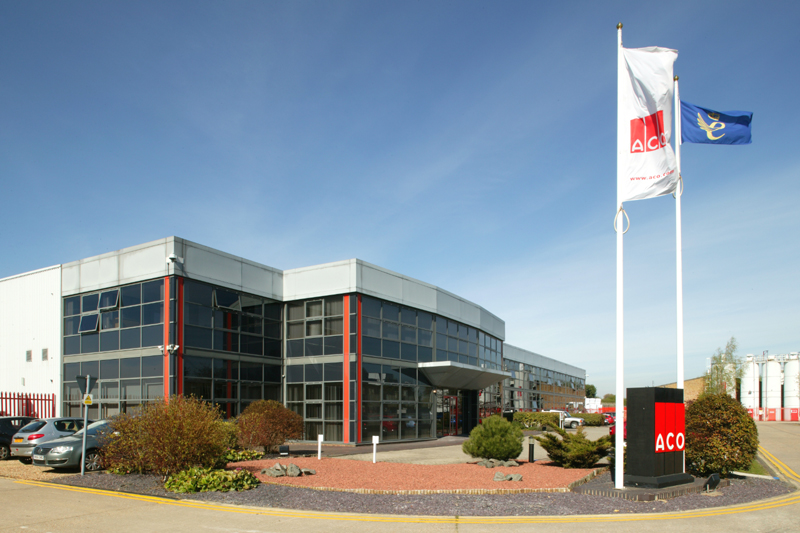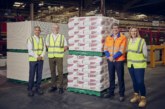
Back in May, the Construction Leadership Council (CLC) announced the first C02nstructZero Business Leaders with ACO Water Management amongst the 14 chosen companies to be labelled as forerunners in sustainability and renewable practices. Here, Adam Cane, Knowledge Manager and Sustainability Lead at ACO Water Management, explains how merchants can join the race to achieve net zero.
The UK Government has targeted 2050 as the year in which the nation will achieve net zero. The result has been a host of companies racing to show how they will meet their own targets, often posting annual updates on their green credentials.
What’s more, the race to net zero has stepped up in 2021. Indeed, the first 14 C02structZero Business Leaders were announced in May, showcasing those companies committed to achieving net zero in the construction industry. Among the initial 14 were four members of the Builders Merchants Federation — ACO Technologies, APP Wholesale, Bradfords Building Supplies and Travis Perkins plc (more BMF members have followed in the ensuing months, including businesses such as Ibstock, Hanson, JCB and Knauf Insulation).
The good news for merchants which are not already Business Leaders is that the initiative is ongoing, and it is expected that even more businesses will join this growing list over the next few months. The initiative enables companies to be role models in the construction industry’s change programme, demonstrating a commitment towards the sector’s drive to reduce carbon emissions in the delivery and operation of the built environment.
However, not all companies are at the same point of their journey and may find the prospect of achieving net zero quite daunting. This is where small, incremental changes can make a big difference and, more importantly, can be implemented now.
One of the main reasons ACO Technologies became the first construction products manufacturer to join the initiative was its 31% reduction in carbon emissions between 2015-2019. The way in which ACO achieved this reduction can be easily replicated by other companies, including merchants, such as:
- Ensuring that sustainable business practices are compliant with ISO 14001 and align with relevant UN sustainability goals;
- Updating electricity systems in commercial and manufacturing settings, including upgrading lights to LEDs and incorporating a renewable electricity tariff; and
- Improved recycling streams — it’s surprisingly easy to improve the recycling rate across a business, if all colleagues commit.
While each organisation has a different road to net zero, there is a need to ensure products manufactured support the environment. ACO, for example, has developed a product range devoted to supporting wildlife and biodiversity and its wildlife range includes tunnel systems to safely allow animals to cross busy roads, kerbed pathways for amphibians to get around grates, and refuges for small animals. These products are designed to limit negative impact on wild animals’ habitats, protecting the environment from preventable damage.

The use of geometric science has also reduced the requirement for concrete haunching around product, saving 11kg of CO2 per linear metre installed of ACO MonoDrain. Additionally, products are tested to ensure the most efficient polymer concrete mix is used, thus lowering embedded carbon.
Navigating a route to net zero
Now is the time for organisations to analyse their practices and identify all the positive changes that can be made to help them grow sustainably. Adopting science-based targets (SBT) is another route merchants can take, allowing them to create both short- and medium-term strategies to reduce carbon emissions. Crucially, they can also be measured against the GHC (greenhouse gas) Protocol.
Merchants should think about the SBTs they can realistically adopt. There are a number that can affect the carbon impact of a merchant, including adding electric vehicles to company car policies, reviewing heating systems and switching over to a 100% renewable energy tariff.
Some of the changes can be made today, such as moving to paperless processes, while others need forward-planning. However, adopting a roadmap can ensure the construction industry is supporting the UK’s move to a sustainable future.
As a Business Leader in the C02nstructZero initiative, ACO is committed to working with the wider supply chain to ensure ambitious, yet essential, net zero targets are met. The objective of net zero by 2050 is a goal which will determine the built environment for future generations. Companies should engage with this conversation and learn from each other as we look to shape the future of the construction industry.
Click here for more information on ACO
With the lockdowns of the last 18 months highlighting the importance of outdoor spaces, spending on landscaping projects has skyrocketed as UK homeowners seek to make the most of their gardens. This presents a real opportunity to building professionals and merchant stockists, and visualiser tools — such as ACO’s Building + Landscaper Visualiser — can be vital in showcasing creative ideas and bringing designs to life.
Darren Crane, National Sales Manager Independent Merchants & Buying Groups, said: “People expect more from their gardens than ever before — it is increasingly an extension of their home that can be tailored to meet whatever demands they might have.
“From a drainage perspective, this has meant a real drive towards products that not only perform their water management function, but look great too. This is where tools such as our visualiser are vital, helping to demonstrate how the latest water management technology can be incorporated into eye-catching designs.”
Click here for more information on ACO’s visualiser tool.










